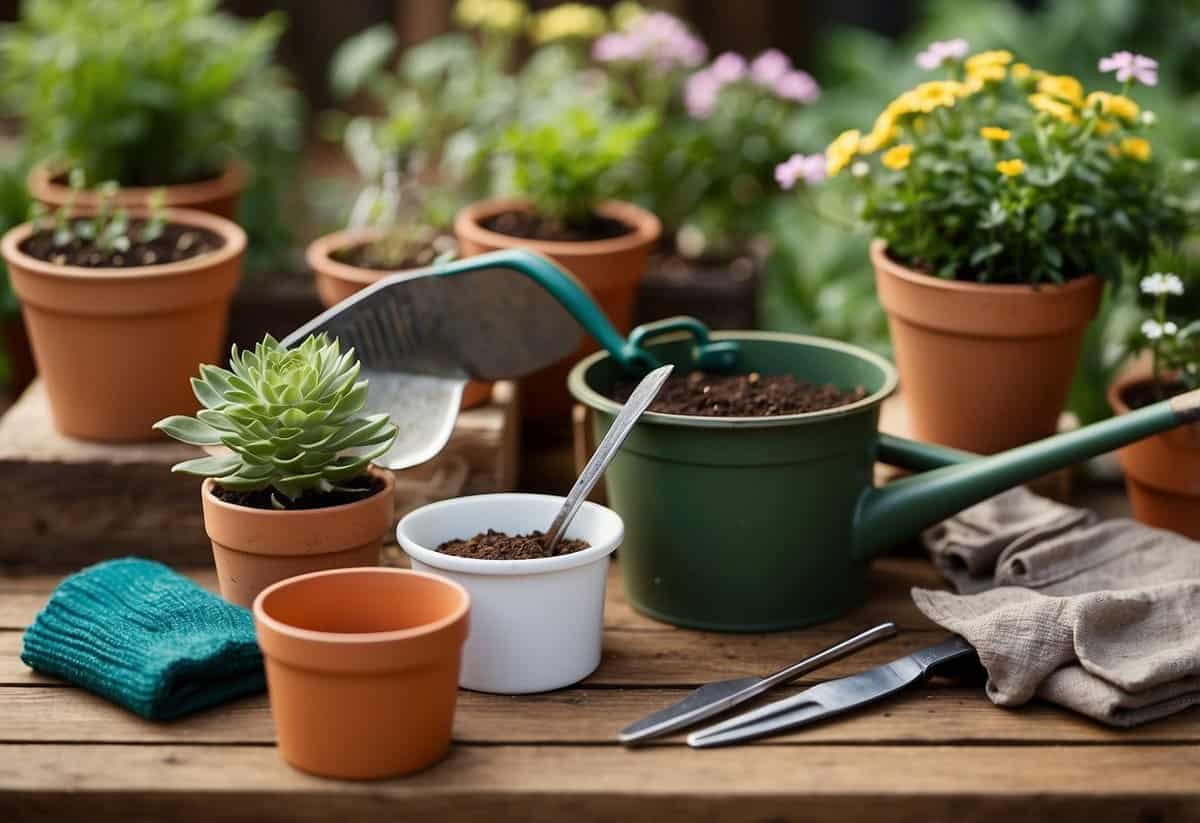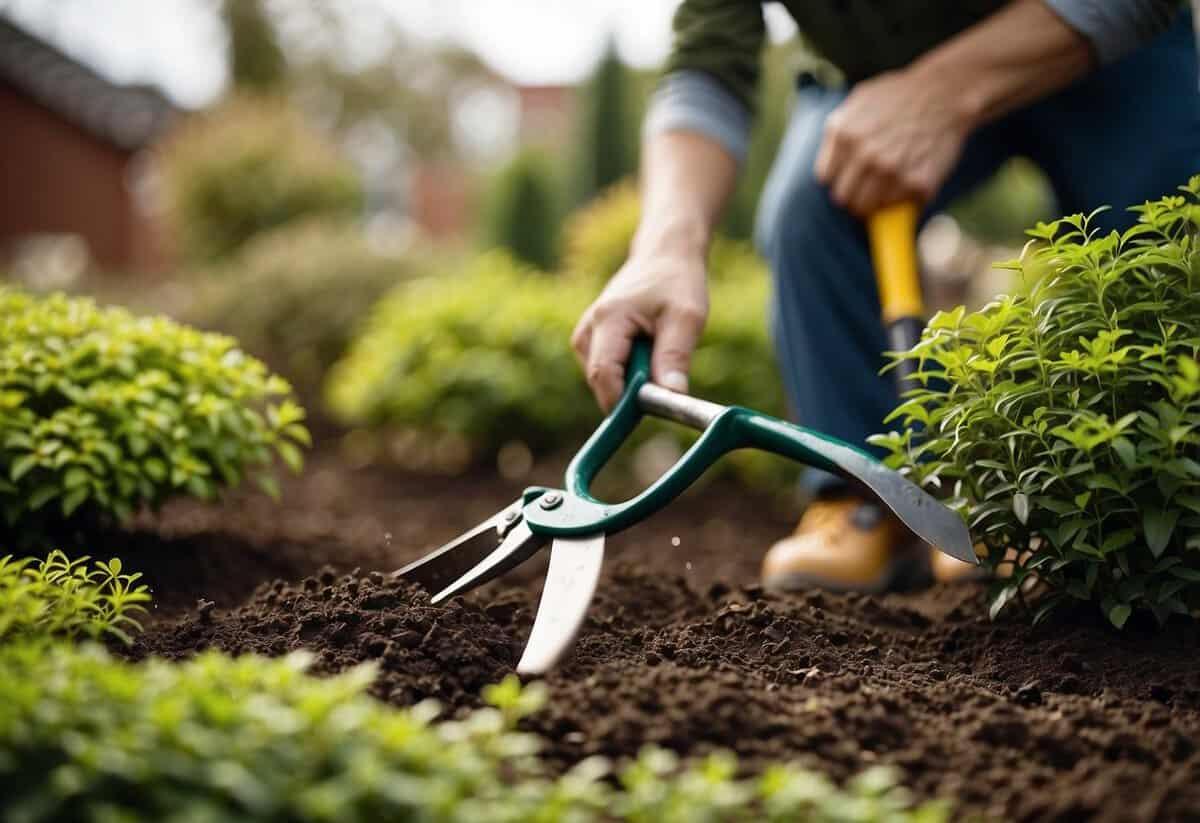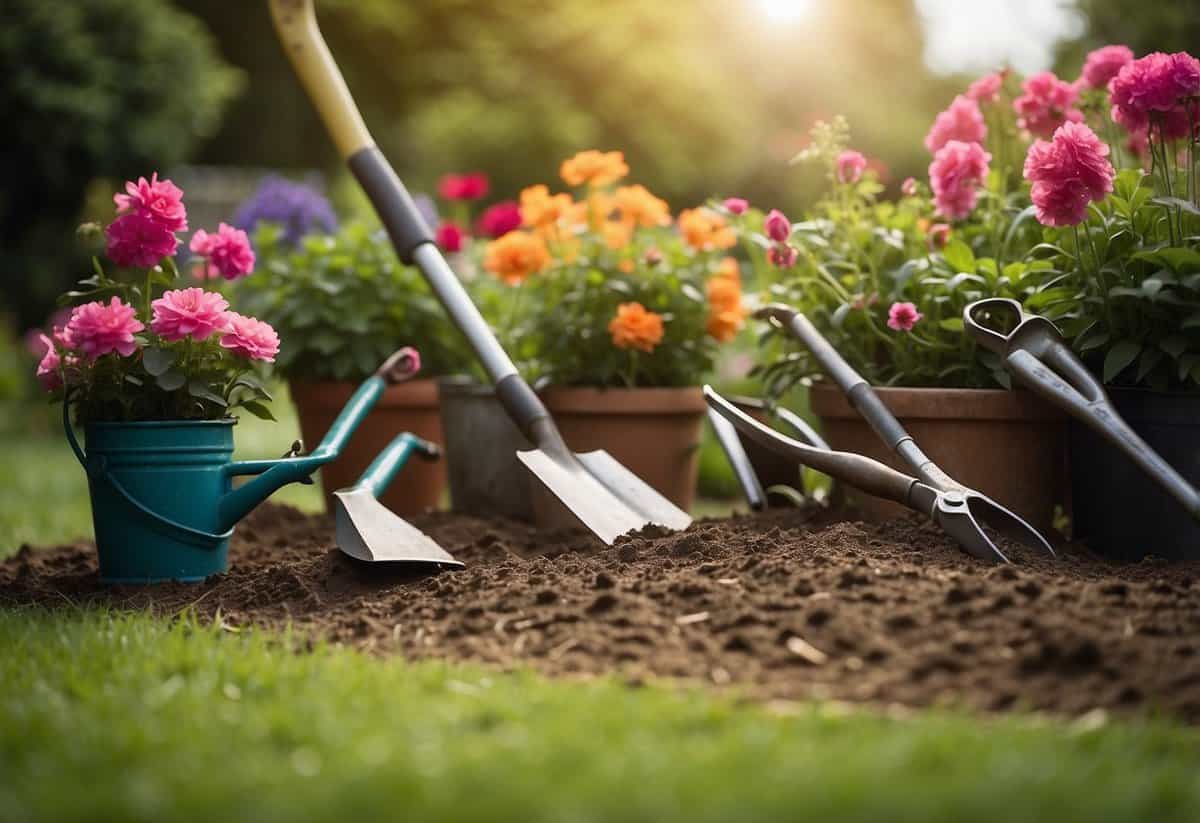What Skills Does a Gardener Need? Essential Abilities for Green Thumbs
Gardening can be a rewarding and fulfilling hobby, but it requires a set of essential skills. To be a successful gardener, you need knowledge and experience in horticulture techniques and tools. This includes understanding how to prune, fertilize, and care for different plants. Being familiar with both hand tools and power tools is also crucial for tasks like planting, watering, and maintaining garden beds.

Aside from technical skills, you’ll benefit greatly from having strong soft skills. Communication, problem-solving, and adaptability are all important traits for a gardener. Whether you are working alone or with others, these skills help you tackle challenges and keep your garden thriving.
Lastly, patience is key. Gardening involves waiting for plants to grow and dealing with changing weather conditions. Being patient helps you remain productive and enjoy the process. By mastering these skills, you can create a beautiful and healthy garden. Learn more about what it takes to be a great gardener by exploring the essential skills every gardener should have.
Fundamentals of Gardening Skills

To become a skilled gardener, it is important to understand plant identification, soil health, and plant cultivation. Each of these aspects plays a crucial role in creating and maintaining a thriving garden.
Plant Identification and Knowledge
Knowing different plants is one of the most important skills for a gardener. You need to be able to identify various plants, understand their needs, and know where they grow best. This includes knowing their light, water, and nutrient requirements.
You should also familiarize yourself with horticulture, which is the practice of growing plants. Understanding plant biology can help you recognize signs of pests, diseases, or nutrient deficiencies. Additionally, knowing the lifecycle of plants, whether annual, biennial, or perennial, helps you plan your garden throughout the year.
Soil Health and Management
Healthy soil is the foundation of any good garden. Knowing how to test and manage your soil is crucial. You should start with soil testing to understand its pH and nutrient levels. Different plants prefer different soil types, so you should know if your soil is sandy, clay, loamy, or a mix.
Once you know your soil type, you can take steps to improve it. Adding compost or organic matter can enhance soil structure and fertility. Mulching can help retain moisture and protect plant roots. Fertilization with organic or inorganic options can provide your plants with the nutrients they need to thrive.
Plant Cultivation and Care
Caring for your plants involves many tasks throughout their lifecycle. This includes planting seeds or seedlings at the right depth and spacing. You should be proficient in pruning and trimming, which encourage healthy growth and flowering.
Watering your plants correctly is key; different plants have different water needs. Some may need daily watering, while others can survive on less frequent hydration. Understanding pest control methods, both natural and chemical, is also important to keeping your plants healthy. Regular monitoring can prevent issues from becoming major problems.
By mastering these fundamentals, you will be well on your way to a successful and bountiful garden.
Technical Gardening Techniques

Understanding technical gardening techniques is crucial for any gardener. You’ll need to master pruning and trimming, fertilizing and composting, and managing pests and diseases to ensure your garden thrives.
Pruning and Trimming
Pruning and trimming are vital for maintaining healthy plants and ensuring proper growth. When you prune, you cut away dead or overgrown branches to encourage new growth. Trimming helps shape the plant and can prevent diseases from spreading.
Use sharp, clean tools like pruners and shears. Timing is also essential; prune flowering plants after they’ve bloomed and trim evergreen hedges in late spring. Pay attention to the plant’s natural shape to avoid over-pruning.
Careful pruning and trimming will result in healthier, more productive plants.
Fertilizing and Composting
Adding nutrients to your soil is key for robust plant growth. Fertilizing provides essential nutrients like nitrogen, phosphorus, and potassium. You can buy commercial fertilizers or make your own compost at home.
To create compost, combine organic waste like kitchen scraps, grass clippings, and leaves. Turn the pile regularly to speed up decomposition. The resulting compost can be mixed into your soil to improve its structure and nutrient content.
Use fertilizers according to the instructions on the package, and always water your plants after application to help the nutrients reach the roots.
Pest and Disease Control
Keeping pests and diseases at bay is a constant battle in gardening. Integrated pest management (IPM) is an effective approach that combines different strategies to control pest populations. Start by choosing disease-resistant plants and practicing crop rotation.
Use natural remedies like neem oil or insecticidal soap to treat minor infestations. For severe problems, you might need to use chemical pesticides, but always follow the instructions carefully to avoid harming beneficial insects or plants.
Regularly inspect your plants for signs of pests or disease, such as yellowing leaves or unusual spots, to catch problems early and prevent them from spreading.
Essential Qualities for Gardening

Gardening is more than just planting seeds and watching them grow. It requires creativity, patience, attention to detail, and physical stamina to create and maintain a beautiful garden.
Creativity in Garden Design
Creativity is essential in garden design. You need to imagine and plan what your garden will look like. This includes choosing the right plants that will thrive in your space and complement each other in terms of color and height. Drawing inspiration from various sources like magazines, garden shows, and even your neighbor’s garden can spark new ideas.
Experimenting with different layouts, plant combinations, and decorative elements like stones and water features can make your garden unique. Planning for seasonal changes, such as blooming flowers in different seasons, ensures your garden looks appealing year-round. Your creative touch will make your garden a personal and beautiful space.
Patience and Detail Orientation
Patience is crucial in gardening because plants take time to grow. You need to wait for seeds to germinate, flowers to bloom, and fruits to ripen. This process can take weeks, months, or even years. Attention to detail helps you monitor plant health, detect pests early, and ensure plants receive the right amount of water and nutrients.
Being detail-oriented means keeping a gardening journal where you track what you plant and how they grow. It allows you to make adjustments based on what works best for your garden. This careful observation and record-keeping can lead to a more successful and thriving garden.
Physical Stamina and Health
Gardening is physically demanding and requires good health and stamina. Activities like digging, planting, weeding, and watering can be strenuous. You need to be prepared for bending, lifting, and spending hours on your feet. Regular gardening can also improve your fitness and flexibility.
Maintaining physical health ensures you can manage and enjoy your garden activities. Staying hydrated, using proper tools, and wearing appropriate clothing and gloves can prevent injuries and make gardening more enjoyable. A healthy body will help you keep up with your garden’s needs and enjoy the rewards of your hard work.
Gardening Equipment and Maintenance

Taking care of your gardening equipment is essential to keep your garden thriving. Proper maintenance ensures that your tools last longer and function efficiently. This section covers how to handle and maintain your tools, as well as cleaning and removing debris.
Tool Handling and Maintenance
Maintaining gardening tools is vital for any gardener. You should always keep your tools sharp and in good condition. Sharp pruners and shears make cleaner cuts and reduce plant damage. Regularly inspect your tools for rust and clean them to prevent corrosion.
Storing tools properly can also enhance their lifespan. Store them in a dry place, and consider using a wall-mounted rack to keep them organized. Oiling metal parts can prevent rust and make tools easier to use. If a tool has wooden handles, applying linseed oil can help maintain the wood and prevent splitting.
Cleaning and Debris Removal
Keeping your gardening area tidy is just as important as maintaining your tools. Regular cleaning helps prevent the spread of diseases and pests. After using your tools, wash off any soil and plant residue. A mix of water and mild soap does the job well.
Debris removal is another crucial task. Fallen leaves, twigs, and other debris can harbor pests and diseases. Use a rake to gather large debris and a smaller hand rake for tighter spaces. Dispose of the debris in compost bins or yard waste bags. Keeping your garden clean helps create a healthier environment for your plants.
To prevent clogs and ensure efficient irrigation, regularly check and clean your garden hoses and sprinklers. This way, they deliver water effectively and help you maintain a lush, thriving garden.
Professional Development and Career

Developing your skills and gaining experience as a gardener can open numerous career opportunities. By focusing on education, practical experience, and effective client communication, you can build a successful career in gardening and landscaping.
Educational Pathways
Enrolling in a gardening course at a university or college can provide you with the foundational knowledge needed for a career in gardening. These courses often cover subjects such as plant identification, safe use of gardening machinery, and greenhouse operations.
Formal education not only enhances your understanding but also adds value to your resume. Consider completing an apprenticeship to gain hands-on experience while learning directly from professionals. Continuous learning is essential. Attend workshops, join a gardening club, or subscribe to relevant publications to stay updated with the latest trends and techniques.
Building Work Experience
Gaining practical experience is crucial. Start by volunteering for community projects or working with experienced gardeners to learn on the job. This allows you to apply your theoretical knowledge in real-world settings and develop essential soft skills.
Work in various settings, such as private gardens, public parks, or landscaping companies, to diversify your experience. Document your experiences and projects meticulously, as this will be valuable for your resume. Highlight any specific skills, such as organic gardening or managing greenhouse operations, that you have mastered.
Communicating with Clients
Clear and effective communication with clients is a vital skill for any gardener. Understanding client needs and preferences helps in delivering satisfactory results. Develop strong communication skills to interact professionally, listen attentively, and provide knowledgeable advice.
Being able to explain your gardening methods and suggestions in an easy-to-understand manner helps build trust and rapport with clients. Additionally, maintaining regular communication about project progress, timelines, and any challenges will ensure transparency and client satisfaction.







